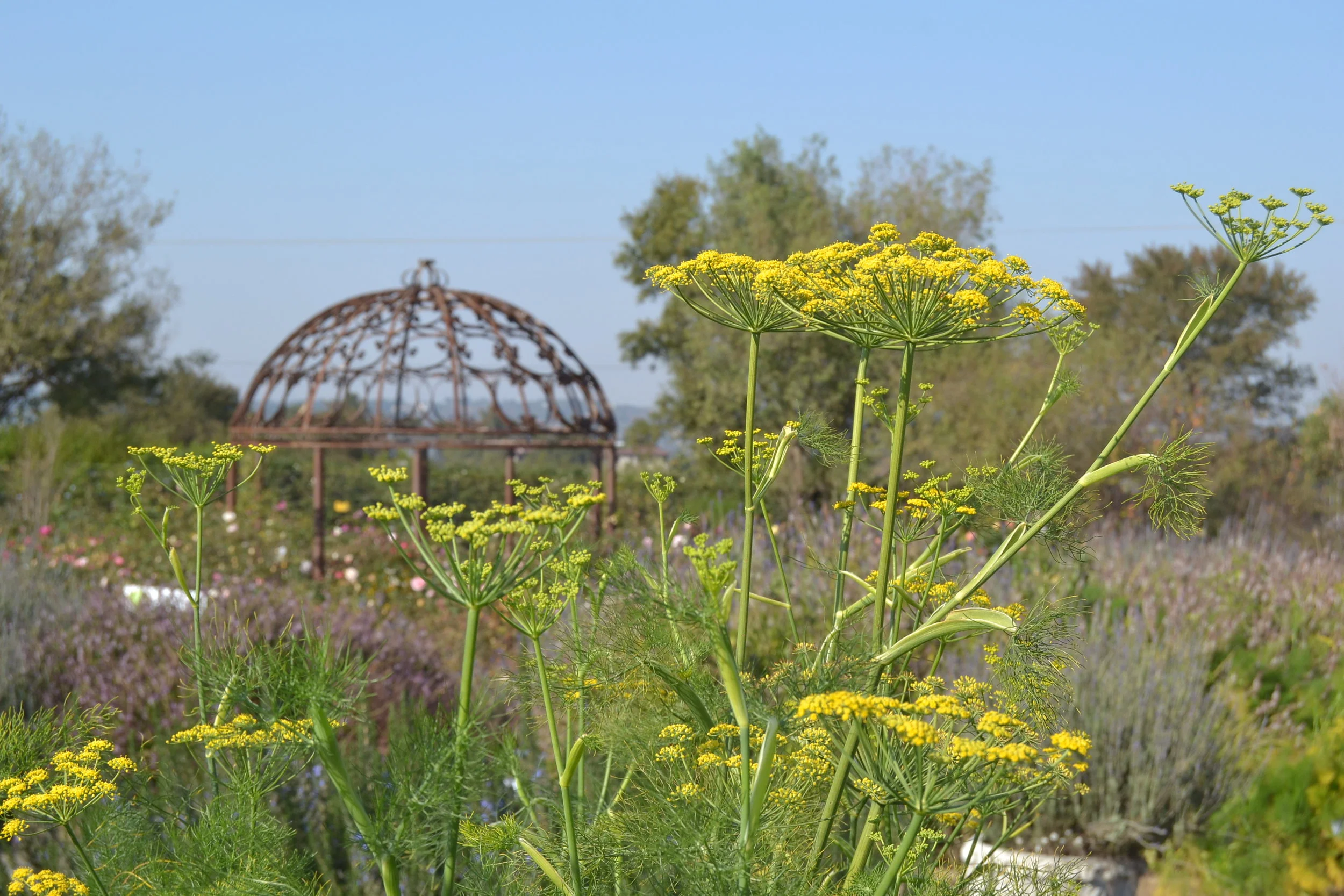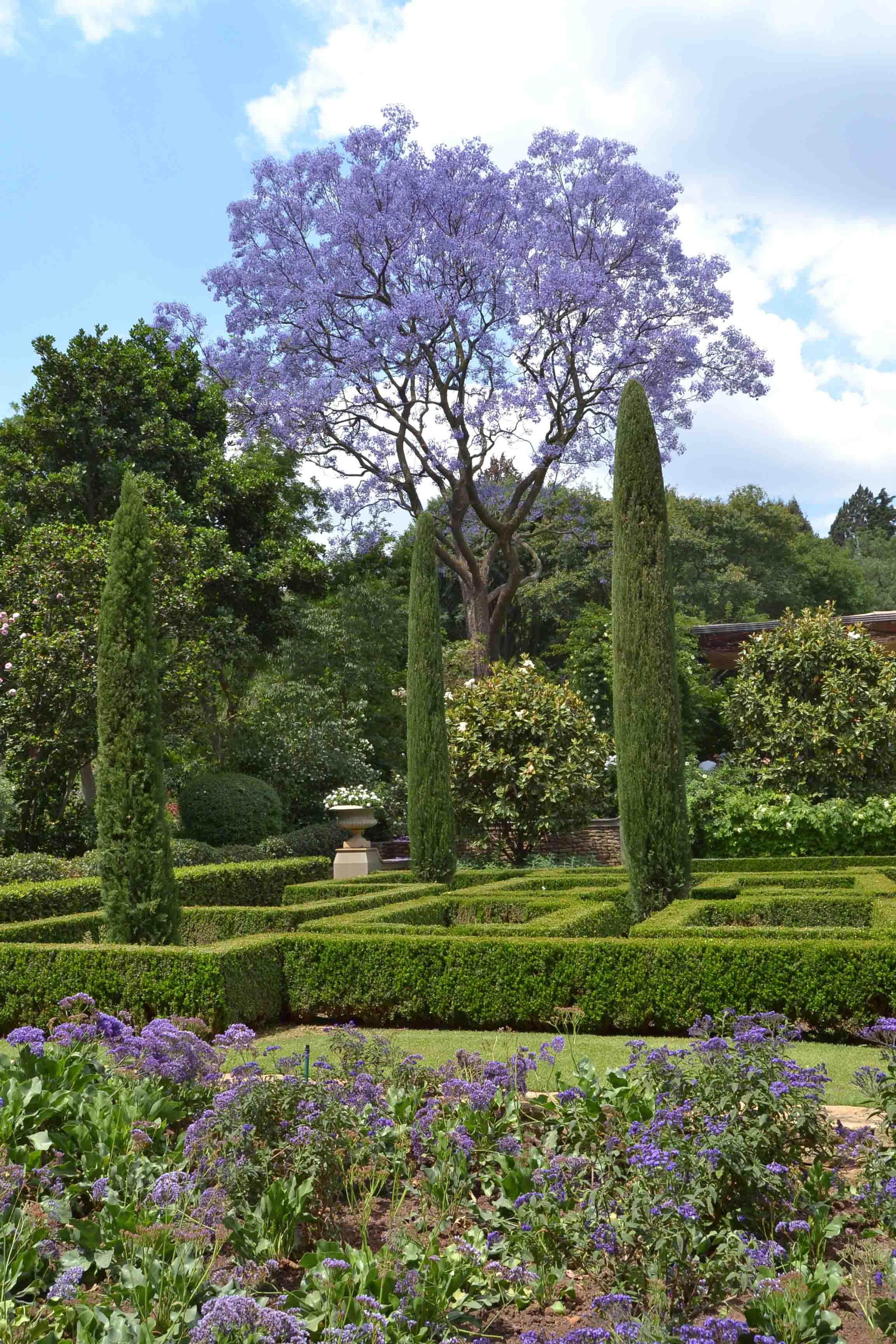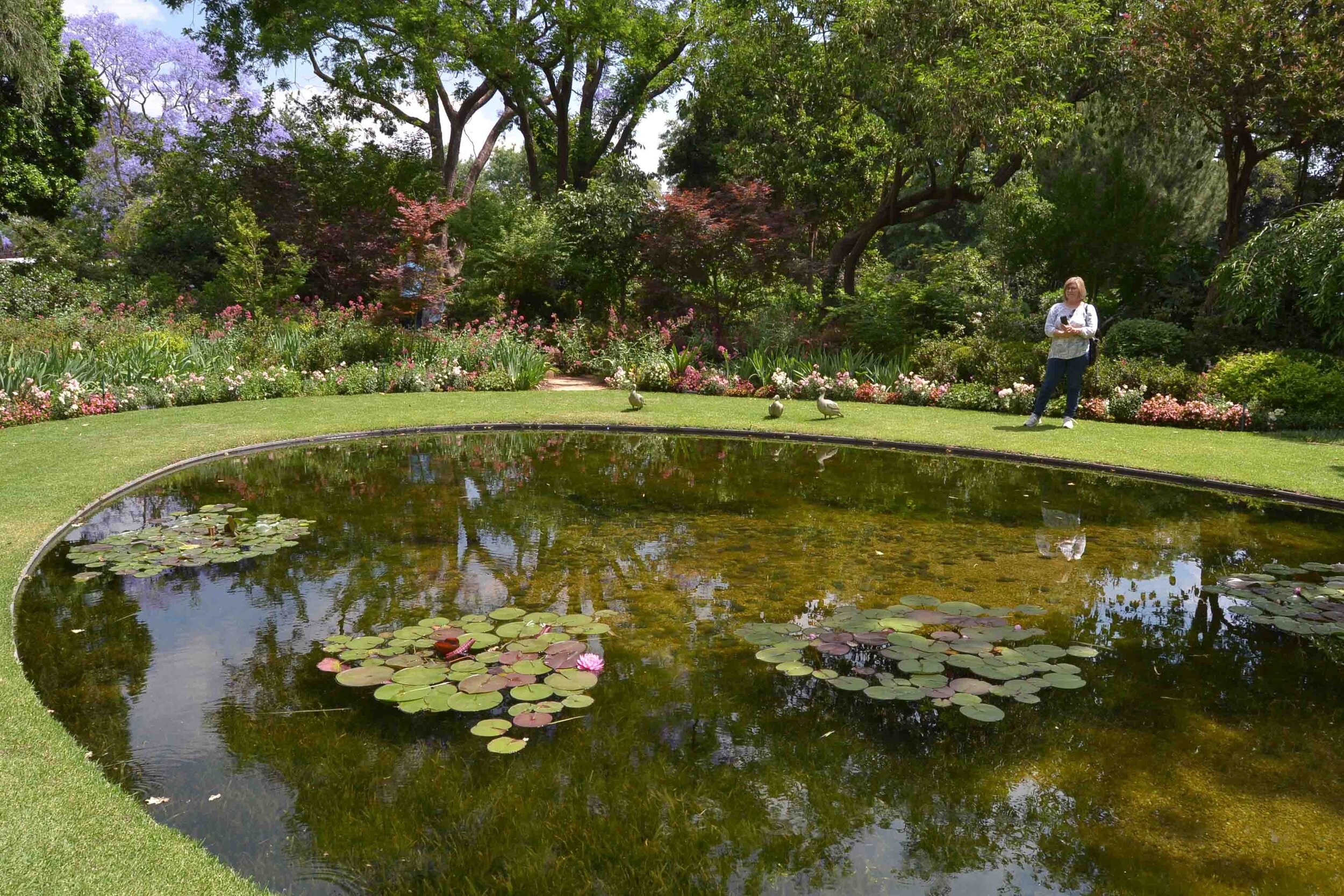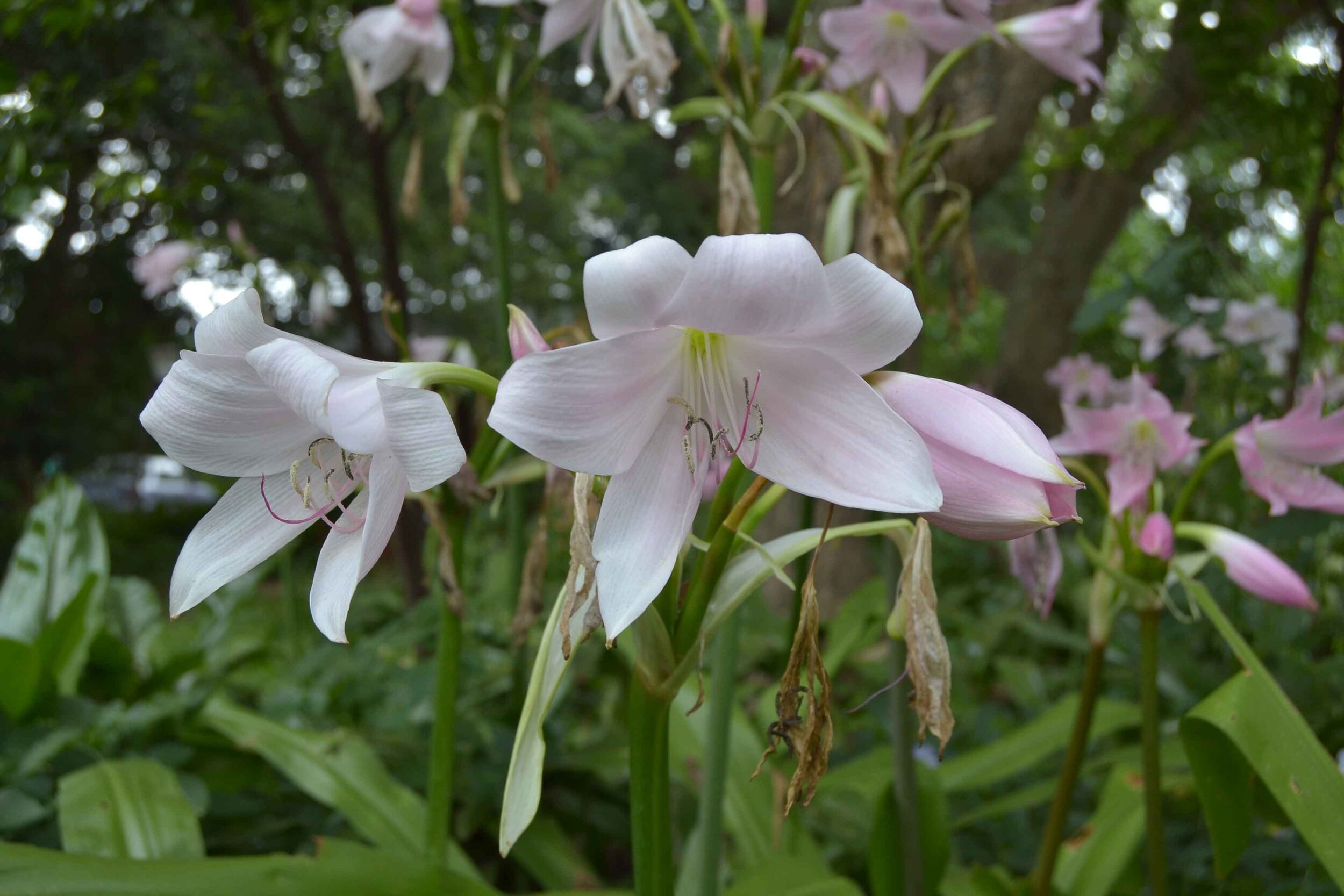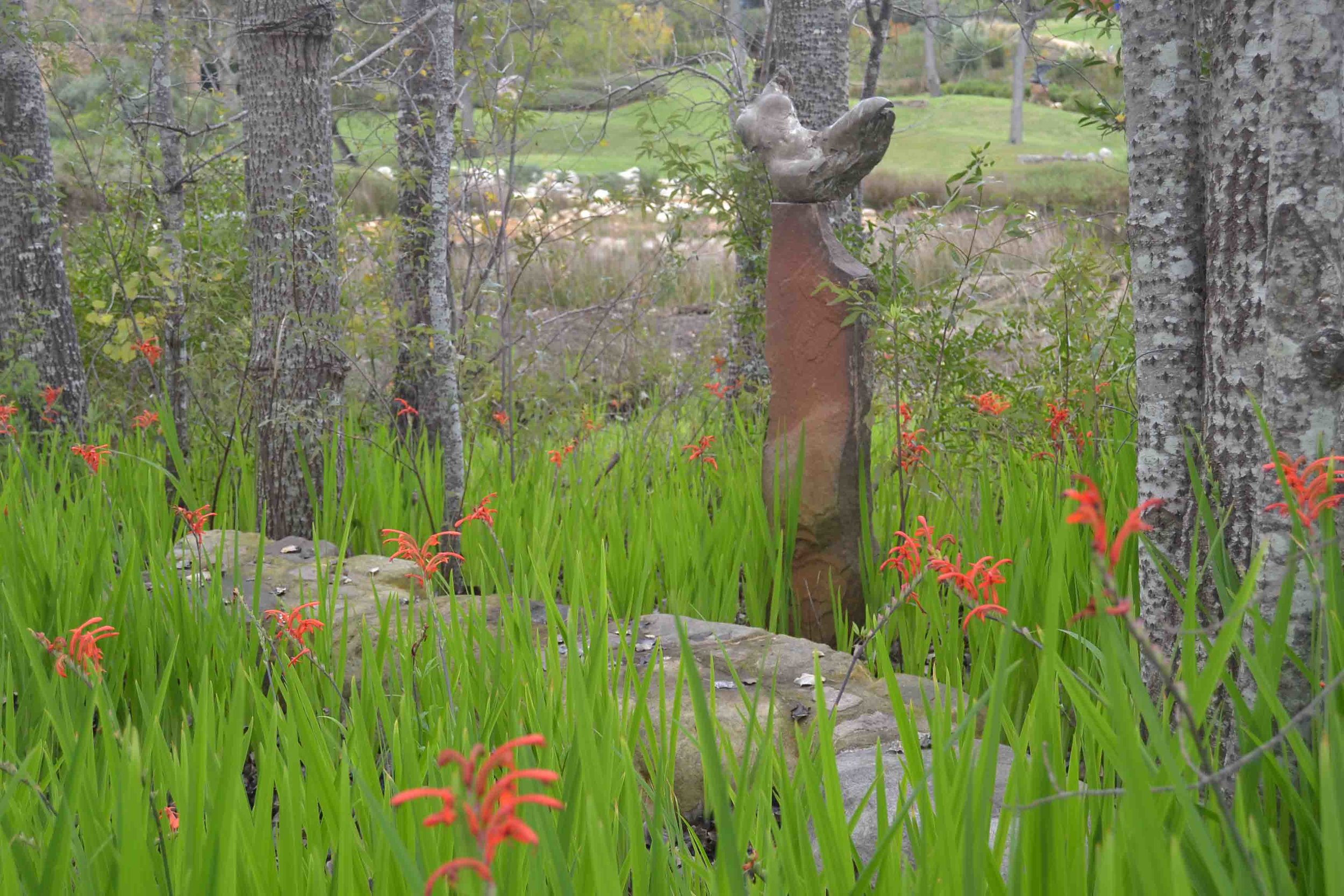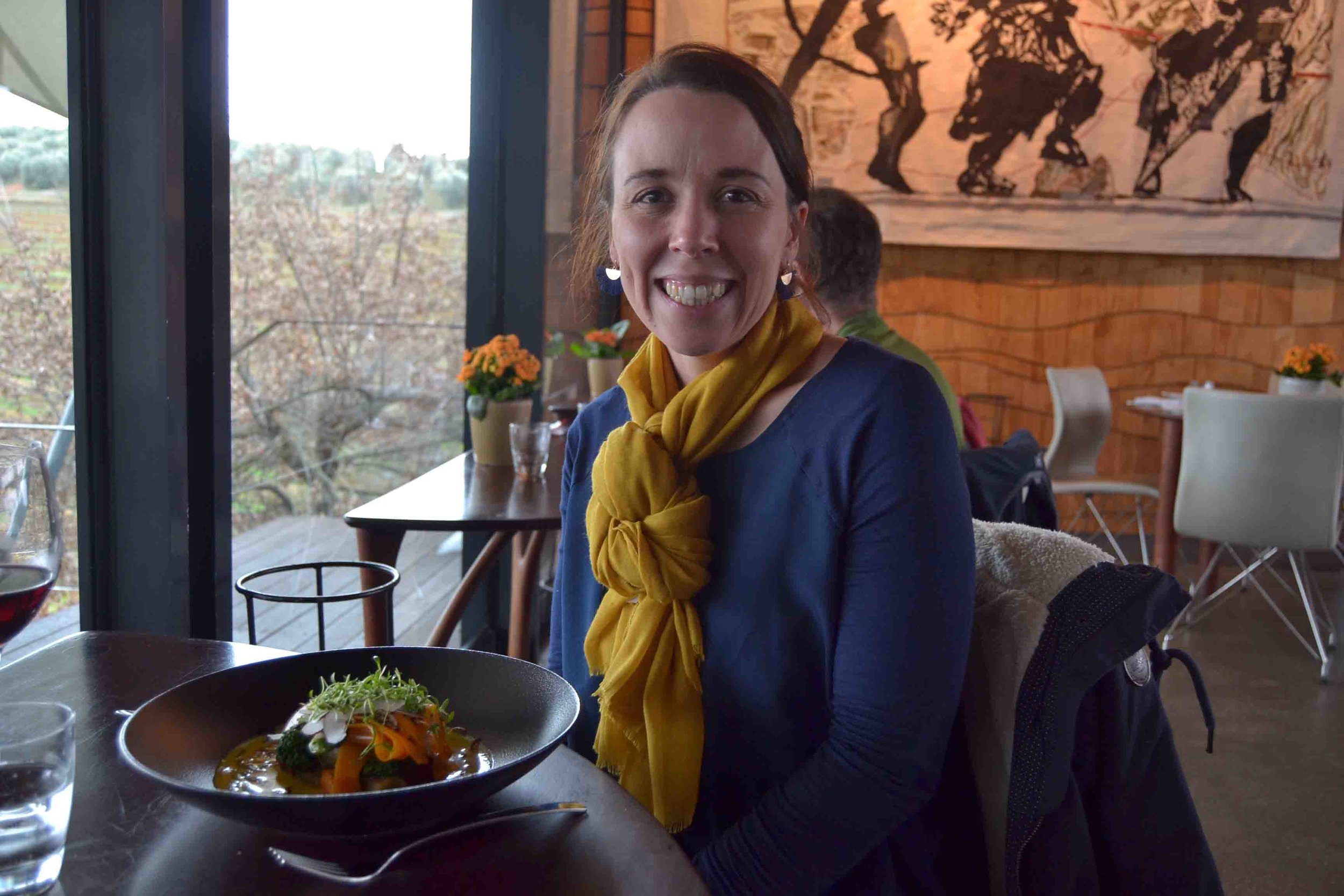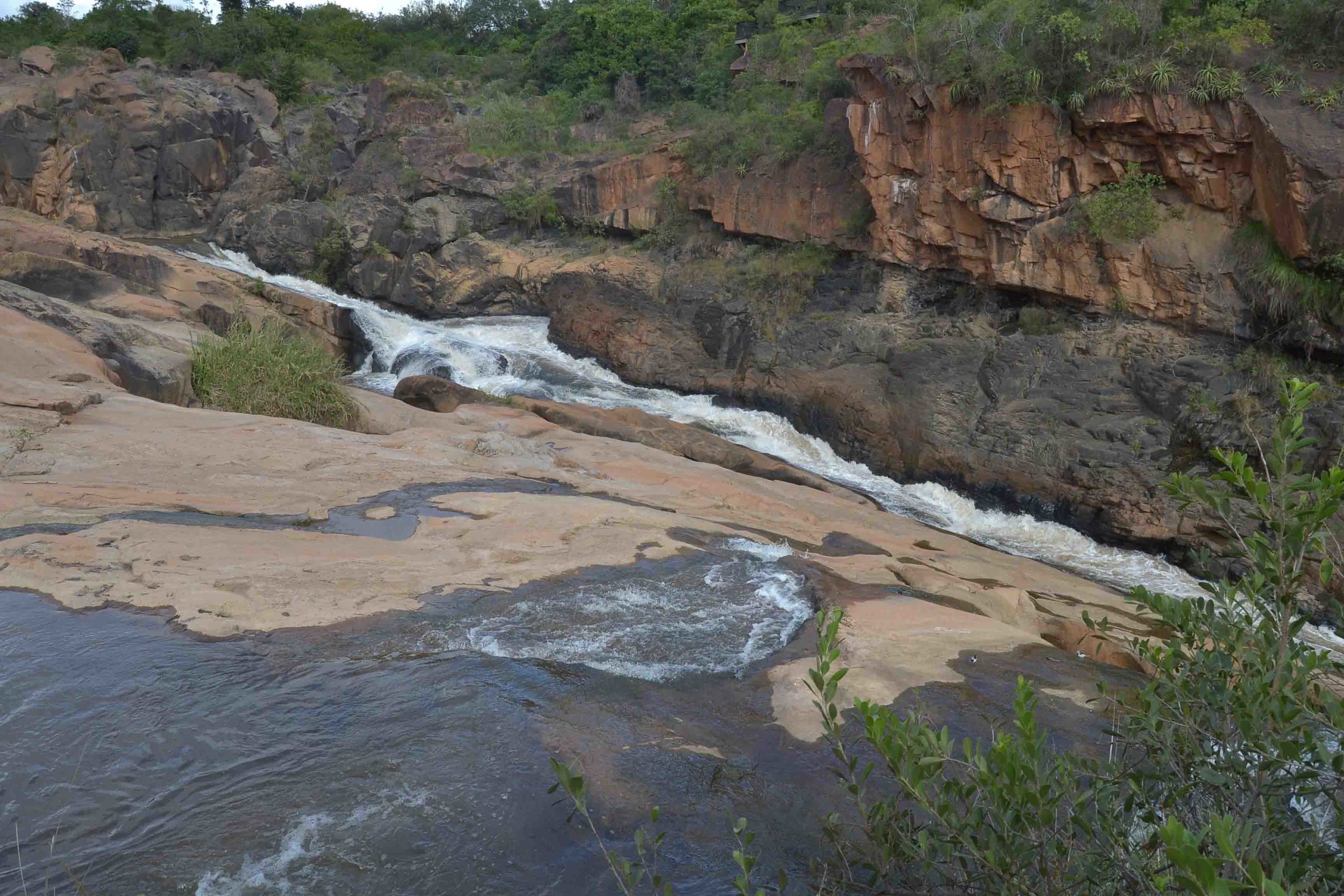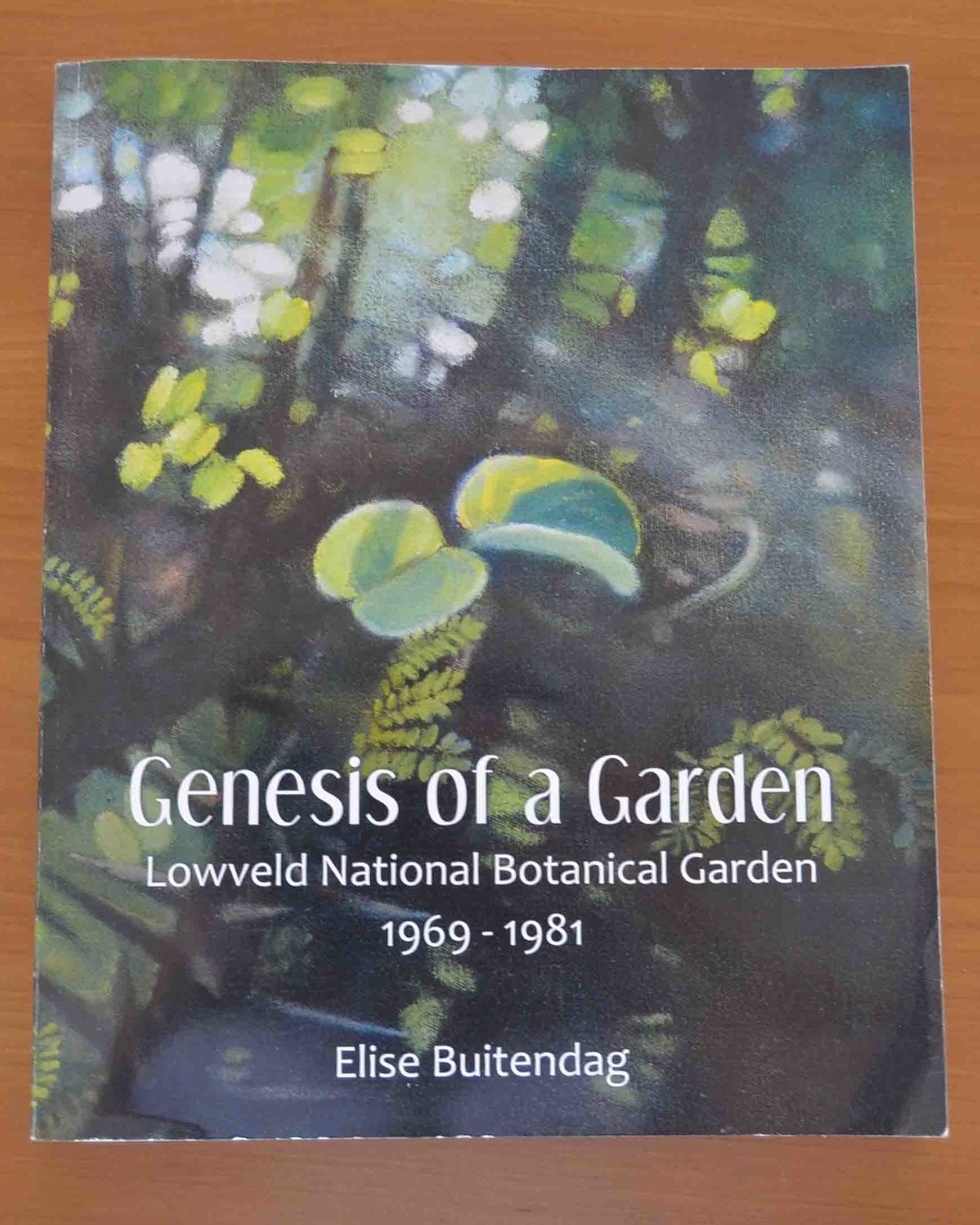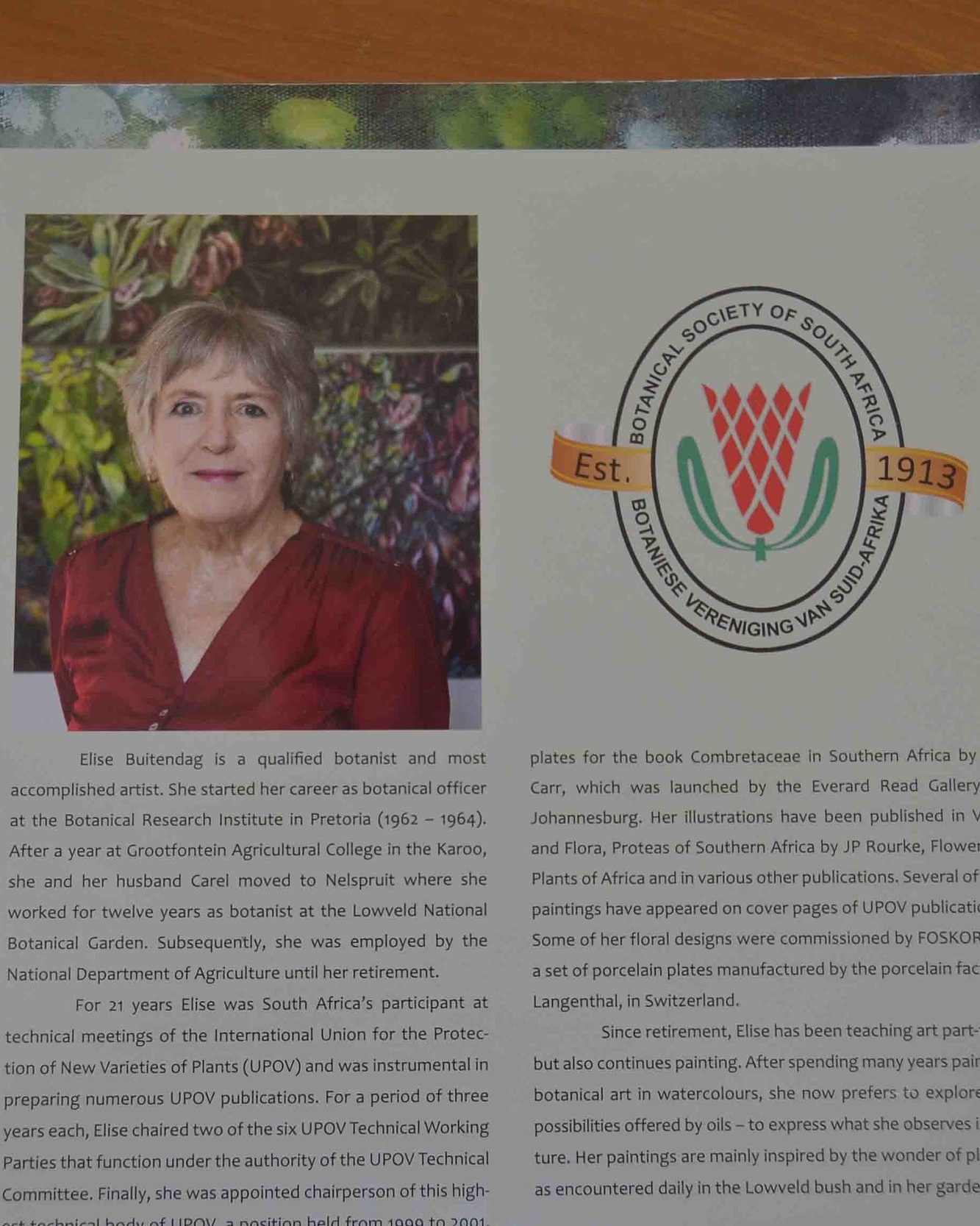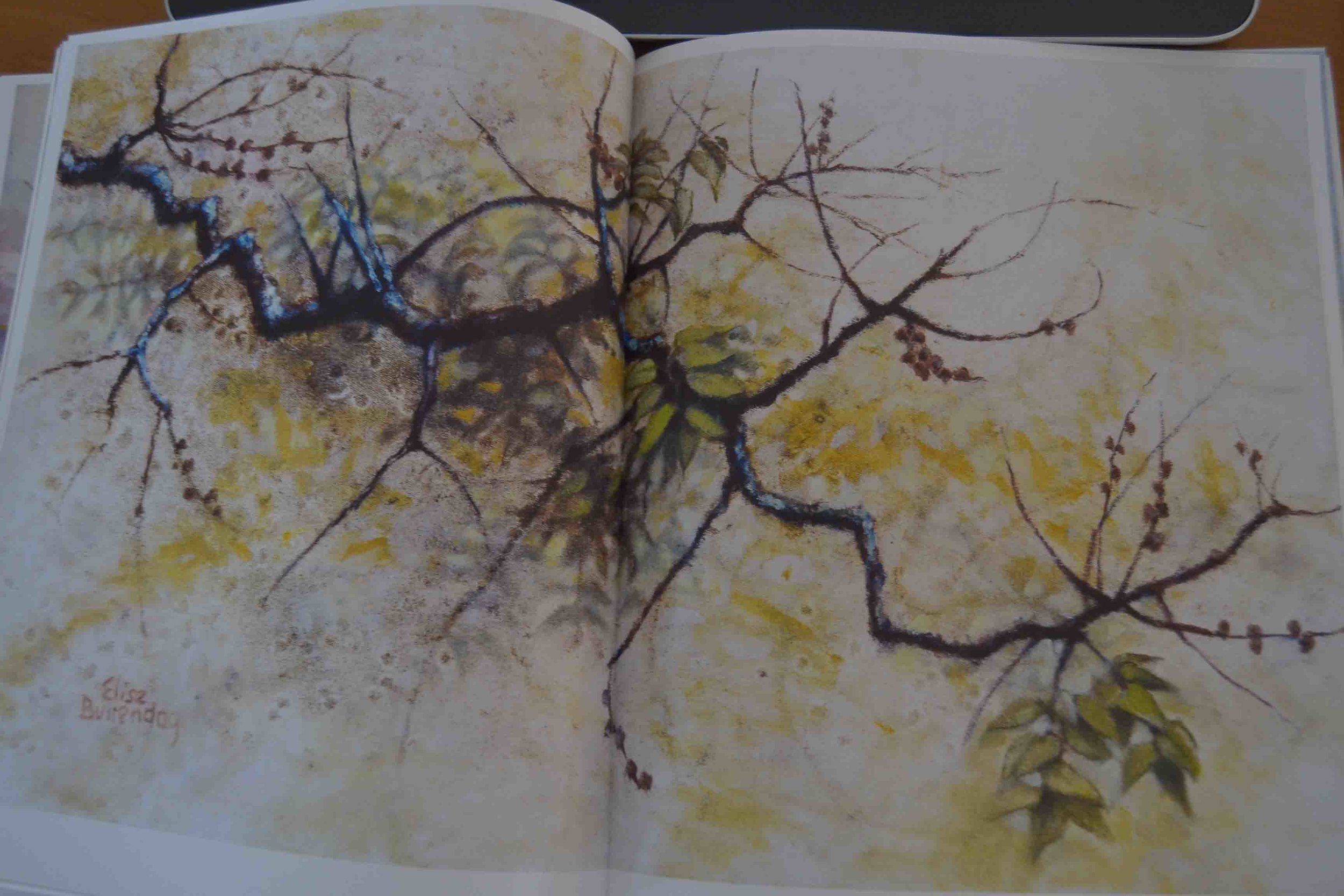What could be more enjoyable than spending a Sunday afternoon exploring a magnificent garden while sipping a glass of champagne? The Gardens of St Christopher (https://www.gardenofstchristopher.com/) held their Spring Open Garden on Sunday 20 October this year. The gardens are open to public only once a year for a charity fundraising event, although group tours can be arranged by appointment.
The Garden is located at 82 9th Road Hyde Park and has evolved and been extended over time. The owners acquired the adjoining property to expand the garden and full implementation of the garden extension was completed in 2012. I find it remarkable that the owners are willing to share this beautiful space with strangers and admire their generosity since all drinks and eats are sponsored and all proceeds go to the South African Guide-Dogs Association.
This is an interview taken from Alain Elkann Interviews which asks the Landscaper Debby Tenquist who designed the Garden:
You and your partner created the St Christopher Garden, a beautiful enclave in the Hyde Park of Johannesburg. Can you describe it?
Designing the seven acre Garden of St Christopher was a privilege and an opportunity to build a large garden with the ultimate luxury of time. Detailed research was undertaken and interesting ornamental plant collections were amassed. The architecture of the house and the Italian ancestry of the owner prompted an Italianate style garden design with English overtones. An environmentally sensitive approach was employed during the project. We used the stumps of trees we had to remove for a Highgrove-inspired stumpery. This area included a fernery and an unusual collection of large mineral specimens including verdite, sodalite and amethyst which added a tangible energy to that part of the garden. The wood from the felled trees was used for rustic paths in the “Bosco” part of the garden which included the oval reflection pond. The pond was inspired by a similar one by Russell Page designed for Babe Paley at Kiluna Farm on Long Island that sadly no longer exists. The pond is encircled by a bowl of azaleas, acers, dogwoods and flowering cherries that is breath-taking in both spring and autumn. The pond is part of a closed system of three water features that are gravity fed and naturally cleaned by a bog garden in the stumpery. A bird garden and a butterfly-bee garden are aimed at increasing the population of natural wild life. A Neo Renaissance buxus parterre is viewed at a height from a stone clad classical pergola. In front of the house is a 80 meter long tapis vert alongside a 40 meter long and 25 meter deep herbaceous border of blue and white perennials planted in broad drifts anchored by curved buxus hedges that reaches its peak in mid-summer. The garden is home to a wide variety of exotic and indigenous trees including a collection of magnolias, crab apples, flowering cherries, acers and a curated collection of over 200 camellias. The most relaxed part of the garden is a meadow of long grasses with mown pathways that is bisected by a meandering river of Louisiana irises that is traversed by Japanese style bridges.
Curved Buxus Hedges with Urns as Focal Points along Main Lawn Area
The Garden consists of several “Rooms” with each one evoking unique emotions and highlighting different angles and plant material. Large established trees are complimented by foliage from shrubs and an abundance of flowering groundcovers (I have never seen so many Foxgloves!). I thoroughly enjoyed exploring and experiencing the Garden and would find it difficult to choose my favourite part of it.
Stunning Display of Foxgloves and other Flowering Plants
Formal Design
Beautiful Flowers fill this Garden to the Brim
The Highlights of the Garden include the following spaces: Gem Walk and Stumpery, Pergola & Parterre, Tigers Eye Cascade, Reflection Pond and Azalea Bowl, Meadow, Camellia Walk, Bird Garden and Butterfly and Bee Garden.
Gem Walk and Stumpery with Ferns
Gem Walk and Stumpery
Pergola
Tigers Eye Cascade with Otter Sculptures
Oval Reflection Pond and Azalea Bowl
Meadow with Crane Sculpture
Meadow
Butterfly & Bee Garden
A few more images showing the foliage, texture and colour combinations of plants within this beautiful garden:

